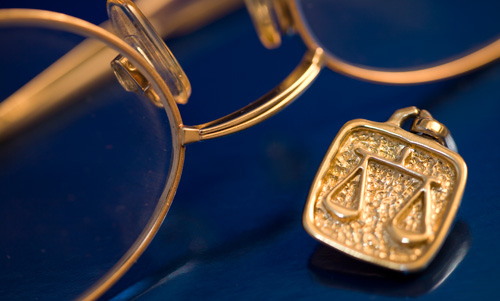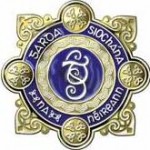|
|
- An additional 20 Judges to be appointed on a phased basis as part of the continuing implementation of the Judicial Planning Working Group Report.
- Approval follows assessment of impact of 24 new judges appointed in 2023 – shown to have had a positive impact on number of court sittings, number of cases resolved and waiting times.
- Additional 20 appointments will support the establishment of the Family Courts.
Approval has been received for 20 additional judges to be appointed on a phased basis, to support timely access to justice across the courts system.
The report from the Judicial Planning Working Group, (set up in February 2021) in their final report published in 2023, recommended the appointment of 44 additional judges in two phases.
A first phase of 24 additional judges was approved and appointed throughout 2023. This built on other judicial appointments brought the total number of additional appointments to 31.
Following the completion of an assessment on the impact of the judges appointed in Phase 1 and progress made in other areas of the report’s implementation, the appointment of a second phase of 20 additional judges has now been approved.
The impact assessment also highlighted the need for Phase 2 of additional judicial resources to build on the progress already made.
Areas identified for continued focus to enhance the timely administration of justice across the courts include:
- Further reducing waiting times and increasing clearance rates.
- Enabling the courts to support new and growing areas of business.
- Facilitating additional training days for judges to ensure that the Judiciary are attuned to the needs of victims and equipped to deal with increasing case complexity.
Actions which have been delivered in the first phase of judicial expansion include:
- An initial trial project to stagger the court vacation was ran in the High Court this summer.
- The Presidents of the Circuit and District Courts are working with the Courts Service to develop protocols for scheduling sittings on all five working days of the week (Monday – Friday).
- Cases are being stacked in the same courtroom where feasible (i.e. one judge conducts a hearing in the morning and another judge conducts a hearing in the afternoon in the same courtroom) and to increase the use of hybrid and remote hearings to maximise the use of courtroom space.
- A report has been completed which has examined further reforms to empower the Court Presidents to ensure the maximum and efficient use of judicial resources in their court jurisdictions.
- A stakeholder engagement group, which comprises representatives of the Department, the Courts Service, judicial observers and affected stakeholders, continues to meet regularly to consider the impact of the implementation of the JPWG recommendations on stakeholders and to identify cross-organisational efficiencies, which may arise in this context.
- €61m for Garda overtime to increase high visibility policing.
- Prisons budget reaches €500m for the first time, funding additional staff and the construction of new prison places.
- A second new helicopter to be purchased for An Garda Síochána.
- Additional investment in 100 Garda vehicles and 2 Water Canon to maintain public safety.
Additional funding of €98m of taxpayer funding has been secured for allocation across the Justice Sector up to the end of this year.
This increased funding will enable An Garda Síochána to bolster high visibility policing and support serious crime investigations throughout the country. A further €61m has been provided for Garda overtime to increase high visibility policing. This has been funded by way of €32m of additional funding and €29m from within the Garda vote.
Key highlights of the Garda capital investment for 2024 include:–
- €5.8 million for the Rosslare Euro Port project, strengthening border security and operational efficiency at this strategic location.
- €6 million to acquire approximately 100 new vehicles, including public order vans and high-powered vehicles for serious crime units, enhancing the Garda fleet’s capacity to respond to a variety of operational needs.
- €8 million will mean that on top of a new helicopter being delivered in Q1 of 2025 a second helicopter can be purchased for the Garda Air Support Unit, improving aerial surveillance and response capabilities.
In addition, An Garda Síochána will procure two ‘water cannon’ to further enhance Public Order tactical capacity, with delivery scheduled for 2025. This equipment is expected to be a key asset in maintaining public safety.
Gardaí at Nenagh Garda Station are today appealing for witnesses, following a serious incident involving a series of assaults at Tullahedy, south west of Nenagh town, in North Co. Tipperary yesterday.
Armed Gardaí and Emergency Services personnel attended at the scene, shortly after midday yesterday, Friday October 18th, where we understand that four individuals sustained non-life threatening injuries; two of whom were reportedly hospitalised with suspected stab wounds.
All parties involved had hastily removed themselves from the scene, prior to the arrival of Gardaí. However, Gardaí confirm that four of the individuals involved subsequently sought medical treatment, of their own accord, for their injuries.
Further enquiries are ongoing.
- New independent Commission will select and recommend candidates for all judicial offices in Ireland and in EU and international courts.
- A new application and interview process will apply to all judicial vacancies.
- Candidates will be required to undergo continuous professional development.
Legislation providing for the establishment of the Judicial Appointments Commission on 1st January 2025 has commenced today. This marks the most substantial reform in the way judges are chosen for appointment in almost thirty years.
The Judicial Appointments Commission Act establishes a new, independent Judicial Appointments Commission to select and recommend persons for all judicial offices in Ireland; in the EU and International courts.
The new reforms provided for, include:
- Reduction in the number of recommendations: 3 candidates to be recommended for a vacancy and an additional 2 recommendations for a second and additional vacancies. For example, this would mean 7 recommendations for 3 vacancies.
- Only candidates recommended by the Judicial Appointments Commission to be nominated by the Government for appointment by the President.
- All judicial posts, whether a first appointment or a promotion from another court will be governed by the procedure.
- Interviews: For the first time, all nominees will have been interviewed.
- Diversity: The Commission will have the objective that membership of the judiciary should reflect the diversity of the population as a whole.
- Continuous Professional Development: Candidates will be required to show they have undertaken judicial training or continuous professional development.
- The Judicial Appointments Commission will set out best practice selection procedures including interviews and the knowledge, skills and attributes required of judges.
Commission Membership.
Membership of the Judicial Appointments Commission, which will be chaired by Chief Justice, The Hon. Mr. Justice Donal O’Donnell and will include:-
The Hon. Ms. Justice Caroline Costello, (President of the Court of Appeal).
Attorney General Rossa Fanning (SC).
The Hon. Ms. Justice Mary Rose Gearty, (High Court).
Judge Alan Mitchell, (District Court).
Ms. Bernie Gray, (Human Resources and Governance expert).
Dr. Eleanor O’Higgins, (Adjunct Associate Professor, College of Business, University College Dublin and Associate, London School of Economics and Political Science).
Dr. Rónán Kennedy, (Associate Professor in the School of Law, University of Galway).
Dr. Terrence McWade, (Former CEO of the Royal College of Physicians of Ireland).
The Judicial Appointments Commission will be established from January 1st, 2025.
- Mr Justin Kelly, Assistant Commissioner, (Organised & Serious Crime), appointed new Deputy Garda Commissioner.
The Government yesterday approved the appointment of a new Deputy Commissioner to An Garda Síochána, with immediate effect.
Following a recent open competition, run by Public Jobs on behalf of the Policing Authority, the appointment of Assistant Commissioner Justin Kelly was announced.
Mr Kelly has previously led the fight against organised and serious crime, as Assistant Commissioner.
In this role, he has led the further development of An Garda Síochána’s capabilities and international partnerships in tackling drugs and organised crime, cyber and economic crime, as well as prioritising and combatting crimes against vulnerable people and responding to the needs of victims.
His career is marked by achievement and results and he is expected to bring his vast experience, skill and huge personal commitment to this new important senior role.
This skill is crucial in the effective day to day management and strategic direction of An Garda Síochána; as well as supporting the current Garda Commissioner, in leading the implementation of the organisation’s ongoing programme of reform.
Garda Commissioner Mr Drew Harris and the Chairperson of the Policing Authority, Dr Elaine Byrne, have both publically welcomed the appointment.
|
Support Us Help keep Thurles.info online by donating below. Thank you.
Total Donated 2024: €350.00
Thank You!
Daily Thurles Mass Livestream
|




Recent Comments